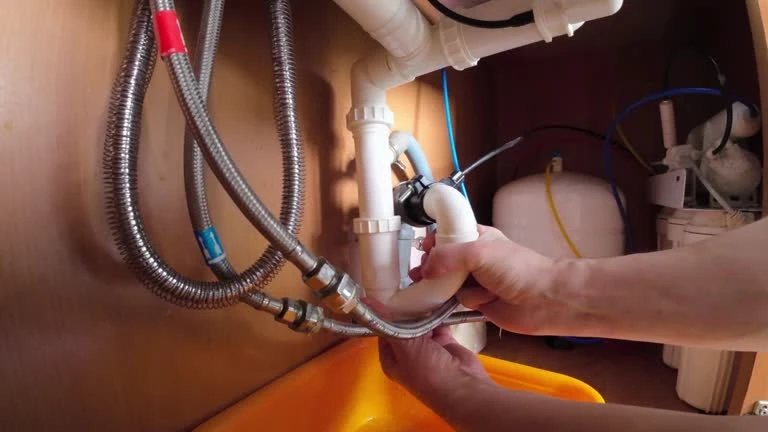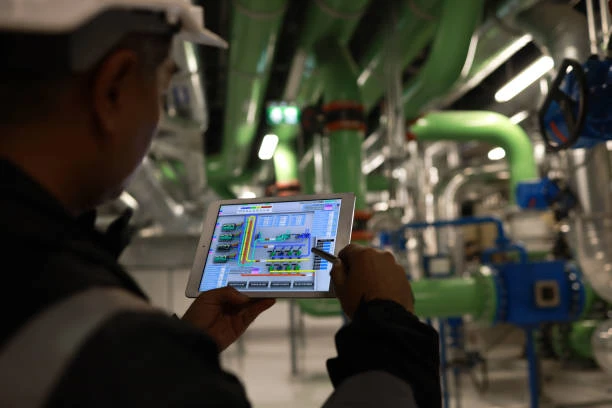Introduction to Material Selection for Ball Valves
Selecting the appropriate material for pneumatic ball valve is crucial for their performance and longevity. The material choice impacts the valve’s durability, resistance to corrosion, and ability to handle pressure and temperature changes. In the context of pneumatic ball valves, the material selection becomes even more critical because they are used in automated systems where efficiency and reliability are essential. Pneumatic ball valves are designed for use in various industries, including oil and gas, water treatment, and chemical processing. Understanding the materials used in these valves ensures optimal functionality and safety, reducing maintenance costs and operational risks.
Key Considerations for Material Selection
Several factors influence material selection for ball valves, including the type of fluid being controlled, temperature, pressure, and potential exposure to corrosive elements. For pneumatic ball valves, it is essential to consider the environment in which the valve will be operating. Will it be exposed to aggressive chemicals, extreme temperatures, or high-pressure systems? The material must withstand these conditions without deteriorating or failing prematurely. Additionally, the valve’s operation type—whether manual or pneumatic—also plays a role in material selection. Pneumatic ball valves require materials that maintain performance under rapid cycling and provide smooth, reliable operation over time.
Common Materials for Pneumatic Ball Valves
The most commonly used materials for pneumatic ball valves include stainless steel, brass, and plastic. Stainless steel is the most popular choice due to its excellent corrosion resistance and strength. It is ideal for use in high-pressure systems and harsh environments. Brass is often used for smaller valves, providing good corrosion resistance and strength, but at a lower cost compared to stainless steel. Plastic materials, such as PVC and PVDF, are suitable for low-pressure systems or applications where weight reduction is essential. Each material has its specific advantages depending on the operational requirements of the valve and the environment it will operate in.
Stainless Steel for Pneumatic Ball Valves
Stainless steel is widely regarded as the best material for pneumatic ball valves, especially in demanding environments. It offers superior corrosion resistance, making it ideal for applications involving water, oil, and chemicals. Stainless steel’s strength also ensures that the valve can withstand high pressures without deforming or failing. Additionally, stainless steel’s ability to perform well at extreme temperatures adds to its versatility. It maintains its mechanical properties in both high and low-temperature environments. For instance, in the oil and gas industry, pneumatic ball valves made from stainless steel are used to control the flow of crude oil and natural gas under high-pressure conditions.
Brass and Bronze for Pneumatic Ball Valves
Brass and bronze are often used for pneumatic ball valves in less demanding environments, particularly in low-pressure systems. These materials are cost-effective and provide a good balance between strength and corrosion resistance. Brass is commonly used for small-sized pneumatic ball valves, especially in HVAC and water treatment applications. Bronze, while similar to brass, is more resistant to corrosion from saltwater, making it a popular choice in marine applications. While they do not offer the same level of resistance to extreme conditions as stainless steel, brass and bronze valves can perform well in many industrial and commercial systems, offering a more affordable alternative to stainless steel valves.
Plastic Materials for Pneumatic Ball Valves
Plastic materials like PVC, CPVC, and PVDF are often used for pneumatic ball valves in less demanding, low-pressure applications. These materials are lightweight, resistant to corrosion, and cost-effective. PVC ball valves are typically used in water treatment plants and other systems where the fluid being controlled is not highly aggressive. CPVC, which can withstand higher temperatures, is used in systems that handle hot water or certain chemicals. PVDF, a more advanced plastic material, is highly resistant to aggressive chemicals and UV degradation, making it suitable for chemical processing industries. While plastic pneumatic ball valves are generally used in lower pressure settings, they offer significant advantages in terms of cost and ease of maintenance.
Material Compatibility with Fluid Types
Compatibility between the valve material and the fluid being transported is crucial for performance and longevity. For instance, in chemical processing applications, the valve material must resist chemical corrosion and prevent leaks or damage to the system. Stainless steel is often selected for its compatibility with a wide range of fluids, including oils, gases, and aggressive chemicals. In contrast, plastic materials are better suited for neutral fluids or diluted chemicals. For pneumatic ball valves used in industries like water treatment, the material must also resist microbial growth and scale build-up. PVC and CPVC are commonly used in these environments due to their resistance to these issues.
Environmental and Cost Considerations
Environmental factors such as temperature extremes, exposure to chemicals, and pressure fluctuations play a significant role in selecting materials for pneumatic ball valves. High temperatures and pressures demand materials like stainless steel that can withstand these conditions without compromising valve performance. Additionally, material costs must be considered, as stainless steel is more expensive than brass, plastic, or bronze. However, the increased longevity and durability of stainless steel can make it a more cost-effective choice in the long run, especially for valves used in high-pressure systems. For industries looking to balance performance and cost, brass or plastic options may offer a suitable alternative for less demanding applications.
Maintenance and Durability of Pneumatic Ball Valves
Maintenance and durability are essential factors when selecting materials for pneumatic ball valves. Stainless steel offers the longest lifespan due to its resistance to corrosion, wear, and high-pressure stress. Brass and bronze, while less durable than stainless steel, still offer a good service life in low-pressure systems. Plastic materials, although cost-effective and lightweight, may have a shorter lifespan, especially when exposed to high temperatures or aggressive chemicals. Pneumatic ball valves made from stainless steel are preferred in harsh environments for their ability to perform reliably over long periods with minimal maintenance. On the other hand, plastic and brass valves require more frequent checks to ensure they are functioning properly and have not experienced degradation due to environmental conditions.
Conclusion
Choosing the right material for pneumatic ball valves is critical to ensuring their optimal performance in industrial applications. Materials such as stainless steel, brass, and plastic offer various advantages based on the specific demands of the system. Stainless steel is the best choice for high-pressure, corrosive, and extreme temperature environments, while brass and plastic are more suitable for lower-pressure systems or less demanding applications. The compatibility between the valve material and the fluid type is a key consideration in the selection process, ensuring that the valve can withstand the chemical properties of the fluid. Ultimately, understanding the advantages and limitations of each material helps in making an informed decision, ensuring reliable and cost-effective valve performance in pneumatic systems.
IFAN Products international standards
IFAN products strictly adhere to a comprehensive range of international standards, encompassing ISO 15874, EN 15874, ASTM F2389, DIN 8077/8078, GB/T 18742, NBR 15884, ISO 15494, EN ISO 15494, GB/T 19472, NBR 15494, ASTM 2846 (501), DIN 8079/8080 (502), ASTM F441/F441M SCH80 (503), DIN (504), DIN (505), GB/T 18993, AS/NZS 1477, CSA B137.6, NSF/ANSI 14, TIS 17-2532/1131-2535, BS 3505, BS 4346 (801), ASTM D1785 SCH40 (802), ASTM D1785 SCH80 (803), DIN (804), GB (805), GB (806), GB(901), DWV(902), ASTM D2665 (903), along with ASTM D2241, D2665, D2729, and F441/F441M series, ISO 1452, EN ISO 1452, DIN 8061/8062, GB/T 10002, AS/NZS 1477, JIS K6741, CSA B137.3, and other national and industry norms.
Connect
IFAN is a Chinese manufacturer of plastic pipes, fittings and valves with 30 years of experience. If you are interest in IFAN copper fittings, copper valves, plastic pipes and fittings, please contact us. IFAN offers you a variety of standard pipes to meet your specific needs. Click below to learn more about IFAN’s wide range of affordable and cost-effective valve products and piping system related products.
We will reply your email or fax within 24 hours.
You can call us at any time if there is any question on our production.
For more information,pls visit our webside https://waterpipefitting.com/
Pls Mailto: [email protected]
Whatsapp: +86 15088288323














Recent Comments